
Let’s discuss nematodes for a minute.
Plant parasitic nematodes were once considered a problem that only affected golf courses in the southern United States. Now, however there is increasing concern about these particular nematodes among sports turf managers globally.
Sand based rootzones provide an ideal environment for these harmful nematodes. Profiles like this provide the nematodes with a uniform host along with a long growing season. The soil makeup is 75% to 95% sand, which provides ideal pore space for oxygen, water and nematode mobility, sports turf in this situation is irrigated frequently, and nematodes need moisture for mobility. The widespread adoption of sand-based constructions has been a contributing factor to the increased frequency of nematode issues.
Types of plant parasitic nematodes:

Root-knot nematodes:
endo parasitic and are probably the most important nematode world-wide with respect to issues on sports turf
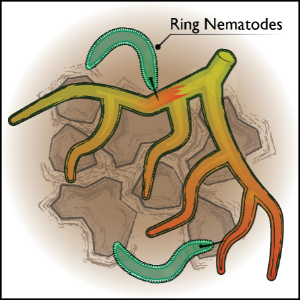
Ring nematodes:
very common ectoparasitic that are named for the distinct ring-like ornamentation of their cuticle
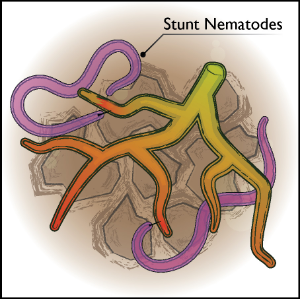
Stunt nematodes:
very common ectoparasitic of grasses and other plants
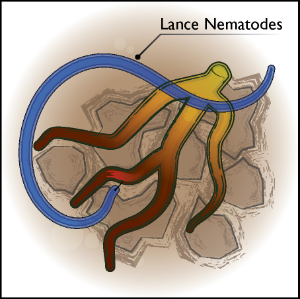
Lance nematodes:
common, ecto- and endoparasitic feeder on turfgrass roots
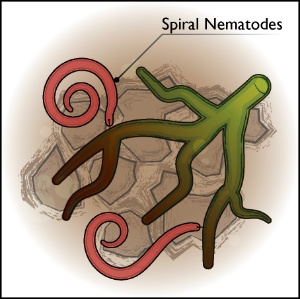
Spiral nematode:
names for their propensity to coil into a spiral shape. Feed on a wide range of host, besides grasses, but do not appear to be overly damaging to turf
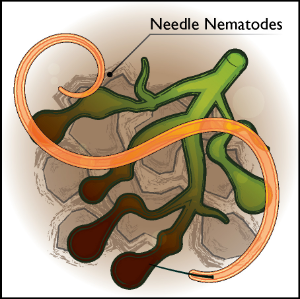
Needle nematode:
ectoparasitic that has a very long stylet and tends to feed on root meristems resulting in swelling of the root tips
Each of these nematodes can weaken turf roots, making them less efficient at translocating water and nutrients. In severe cases, nematode activity can cause turf to wilt, decline, induce disease pressure and even die. Even when nematode damage is less severe, it can make turfgrass less tolerant of environmental stresses.
Roots that have been damaged by nematodes are less able to extract nutrients and therefore this situation can contribute to fertiliser leaching.
The pictures below are from a golf course in Columbia, Missouri. Bent grass greens, sand based, with high counts of Ring, Stunt and Lance nematodes on the Nematode Assay, done by Pathologist Dr. Barb Corwin at Turfgrass Diagnostics.

TurfRx NatureCur, when integrated into a comprehensive nutrition and soil health programme, allows for positive root growth under conditions of severe abiotic stress. Stress factors such as soil chemical imbalance and soil biological imbalance always precede economic damage from nematodes.
TurfRx NatureCur is a botanical extract product that contains 5% potassium. It also contains proprietary soluble carbon compounds that improve antioxidant production and stimulate root growth and metabolism.
TurfRx NatureCur contains plant extracts that result in grass plant tissue becoming less palatable to the plant parasitic nematodes whilst not being harmful to beneficial nematodes such as the predators and fungal‐and bacterial-feeders. The establishment of a balance in the Soil Food Web being the ultimate goal.
TurfRx NatureCur can be applied at up to 20L / Ha per month where plant parasitic nematode issues are acute, however, the “little and often” approach may be more successful as a consistent supply of the botanical extracts to the vascular system of the grass plant will be more likely to retain the necessary level of unpalatability required.
Apply 5L / Ha weekly, 10L / Ha fortnightly, 15L / Ha three weekly or 20L / Ha monthly.
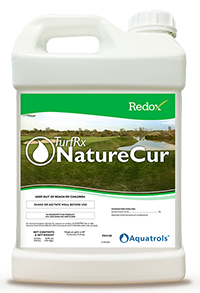

Comments are closed.